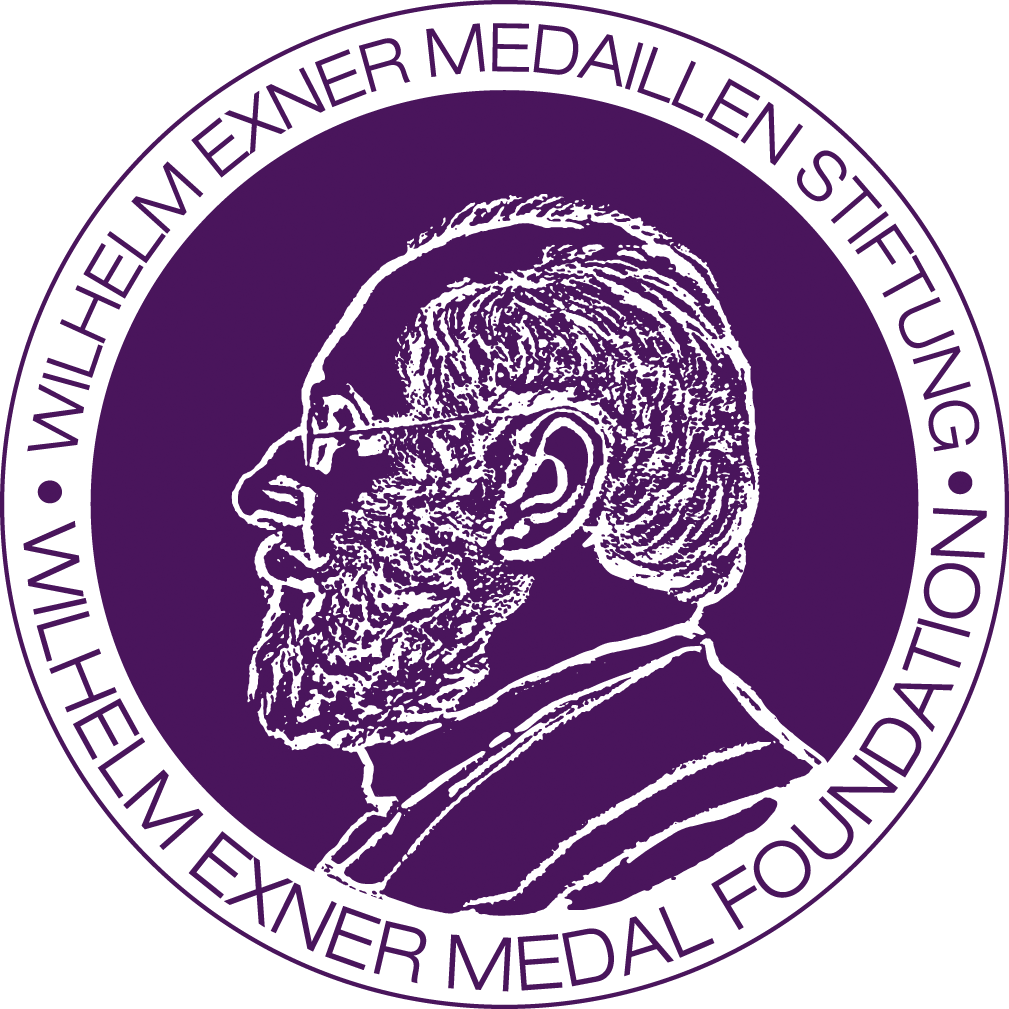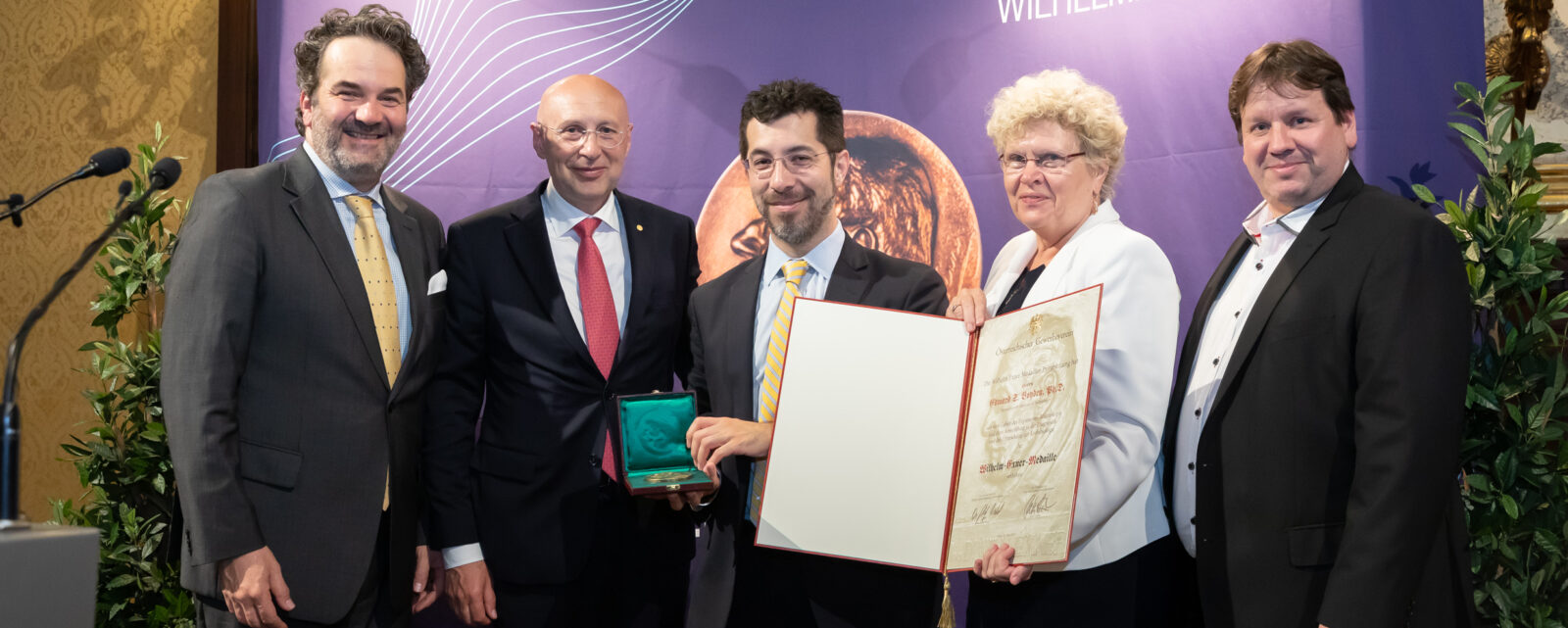The Wilhelm Exner Medal of 2020 could only be awarded on May 23rd, 2023.
- Lectures 2024 | Guilio Superti-Furga
- Lectures 2024 | Ferdi Schüth
- Lectures 2023 | Omar Yaghi
- Lectures 2023 | Thuc-Quyen Nguyen
- Lectures 2023 | Daniel Anderson
- Lectures 2021 | Katalin Kariko
- Lectures 2021 | Luisa Torsi
- Lectures 2020 | Edward Boyden
- Lectures 2019 | Joseph DeSimone
- Lectures 2018
- Lectures 2017
- Lectures 2016
- Lectures 2015 | Gregory Winter
Edward S. Boyden
Analyzing and Repairing the Brain
The brain, the most complex known structure, governs thought, emotion, and identity, yet its diseases—affecting over a billion people worldwide—remain incurable. Expansion microscopy (ExM), developed by the Boyden lab at MIT, revolutionizes brain mapping by physically enlarging tissue 100x in volume or more by infusing brain specimens with a chemical (similar to the material of baby diapers) that increases in size upon contact with water. This preserves nanoscale details, allowing detailed mapping of neural circuits. ExM has the potential to advance treatments for brain diseases and even inspire new AI models by revealing how the brain processes information.
Beyond neuroscience, ExM enhances early disease detection by magnifying subtle changes in biopsies. ExM is being globally adopted to address specific medical and biological challenges, bridging fundamental research with clinical applications.
Edward S. Boyden (Massachusetts Institute of Technology)
Gerhard Schütz
Following T-cell antigen recognition molecule by molecule
T-cells detect single antigenic peptide/MHC complexes (pMHC) among thousands of endogenous pMHCs via T-cell receptors (TCRs), yet the mechanisms behind this extraordinary sensitivity remain unclear. Gerhard Schütz and his team of researchers investigated TCR distribution within the immunological synapse using single-molecule localization microscopy, achieving <15 nm isotropic precision. Additionally, they explored the role of mechanical forces in TCR-pMHC interactions, which are hypothesized to influence specificity and sensitivity.
To quantify these forces, they developed a calibrated FRET-based sensor—functionalized with either a TCR-reactive single chain antibody fragment or peptide-loaded MHC—tethered to supported lipid bilayers. This sensor enabled measurement of TCR-imposed tensile forces at the single-molecule level, revealing force magnitude, directionality, and kinetics.
Gerhard Schütz (Technical University of Vienna)
Johann Georg Danzl
Untangling brain tissue architecture with light microscopy
The brain’s ~86 billion neurons, each forming thousands of synapses, create a densely interconnected network that serves as the basis for information processing. While light microscopy bears the potential of gaining further insight into neural activity, its diffraction-limited resolution fails to resolve fine cellular structures. Even super-resolution techniques struggle to reconstruct brain architecture at synaptic scales.
The interdisciplinary approach of Johann Georg Danzl’s research group combines advanced optical methods, innovative sample preparation, and deep-learning image analysis to overcome these limits. The aim for integrating these tools is to visualize brain tissue architecture—from individual synapses to large-scale networks—in living systems. These innovations promise insights into the brain’s way of functioning and how its structure evolves over time.
Johann Georg Danzl (Institute of Science and Technology Austria)
Kareem Elsayad
Uncovering a hidden world of dynamic structure using high resolution optical microspectroscopy: biological and medical implications
Super-resolution and expansion microscopy have revealed the nanoscale molecular architecture of biological systems, yet functionality depends critically on physical and mechanical properties that remain challenging to assess. At the Vienna Biocenter and Medical University of Vienna, high-resolution optical microspectroscopy approaches are developed to probe these dynamics.
Wavelength- and time-resolved microspectroscopy methods that analyze molecular “jiggling” can provide information about the microscopic elasticity and viscosity in a 3D sample and give insight into micromechanical properties, molecular interactions, and, in some cases, material phase-states. These insights hold promises for medical diagnostics and prognostics and help deepen the understanding of biological processes and different pathologies. Combining microspectroscopy with anatomical information and studies of nanoscale structure can ultimately lead to more precise models of physiological processes.
Kareem Elsayad (Medical University of Vienna)


